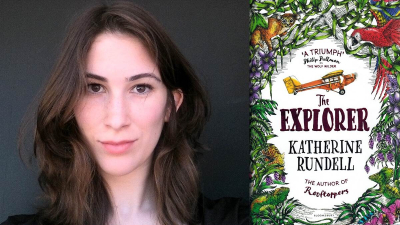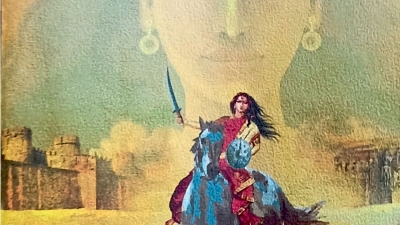
Step into the magical world of childhood with acclaimed English author Katherine Rundell, whose adventurous stories have captured the hearts of many young readers in recent years. Read on to discover more about this talented author and her enchanting tales.
Katherine Rundell is a celebrated multiple-award-winning English author whose poetic verse makes words dance on the page like sunlight on a rippling stream. With a heart full of adventure and a mind brimming with creativity, she crafts stories that ignite the imagination of young readers and transport them to magical worlds.
Born in 1987 in Kent, England, Rundell spent her formative years in Zimbabwe and Brussels. Following her undergraduate studies at Oxford, she was chosen as a Fellow of All Souls College, where she completed her doctoral thesis on the renowned metaphysical English poet John Donne. Last September she published the book ‘Super infinite The Transformations of John Donne’, in honour of the 450th anniversary of the poet’s birth. This critically acclaimed work won her 2022’s Baillie Gifford Prize for Non-Fiction. Rundell who is in her mid-thirties now, started working on her debut novel ‘The Girl Savage’ the day after she turned 21. Drawing on her carefree childhood in Zimbabwe, and the devastation of her family relocating to Belgium when she was 14, her debut novel narrated the story of a free-spirited girl called Wilhelmina Silver who has spent most of her childhood on an African farm and is sent to a boarding school in England following the death of her father.
As an imaginative and adventurous storyteller, Rundell intricately weaves her intriguing and quirky personal interests into her characters, whether it is her love for tightrope walking or roof walking or her fascination with the Amazon. Her characters act as an extension of her inner child and her stories (that are generally aimed at middle-grade readers) combine elements of action, adventure, and magical realism. Her tales take the readers on a journey to faraway lands, where they can explore the mysteries of the world and discover beauty in its hidden corners. Some of her most well-known works include ‘The Rooftoppers’ which won the Waterstones Children’s Book Prize in 2014, and ‘The Explorer’, which was shortlisted for the Costa Children’s Book Award in 2017.
Choosing children’s literature
When Katherine Rundell first began writing children’s books, it was not because she saw it as her ultimate destination. Rather, she viewed it as a stepping stone, a path to follow in the footsteps of her literary idol Jane Austen. Rundell was acutely aware that her authorship was not at the level she aspired to, and so she turned to the world of children’s fiction as a training ground. But as she has grown and developed as an author, she has come to realise that the genre is so much more than a mere proving ground. To suggest that children’s literature is simply a place to polish her skills before moving on to “real” writing is a notion that she now passionately rejects
Reading: A way to cope with the loss
Reading is almost exactly the same as cartwheeling: it turns the world upside down and leaves you breathless says Katherine Rundell Reading was a cherished pastime for Randell, especially because it helped her during some of the most difficult years of her life. It was a stressful time for the family, and Rundell was only nine or 10 years old when her parents were caring for a foster sister who was terminally ill. The experience of losing someone so young was deeply saddening and profoundly painful for the author. Yet, she found solace in books devouring them with an insatiable- appetite. Looking back on this time she believes that it was no accident that she writes for the age she was when she experienced such heartache. Despite the pain, Rundell drew those she loved closer and cherished the things that brought her joy, namely, the power of storytelling.
Embracing the wonder of childhood
Rundell’s stories are more than just mere escapism; they are tales that inspire and challenge young readers to think deeply and feel connected to the world around them. Her books are important because they offer a glimpse into the human experience that is both universal and uniquely personal. She captures the essence of childhood wonder and joy but also the fear and uncertainty that often come with growing up. Her stories speak to the resilience and ingenuity of the human spirit and encourage readers to embrace their sense of adventure and explore the unknown.
Through her stories, Rundell shows young readers the power of creativity, resilience, and empathy, and why these qualities are essential to making the world a better place. The success of her books is a testament to the power of storytelling to inspire and transform young minds. Through her beautiful and imaginative works, she has created a legacy that will continue to inspire generations of young readers for years to come.
Picture Credit : Google





